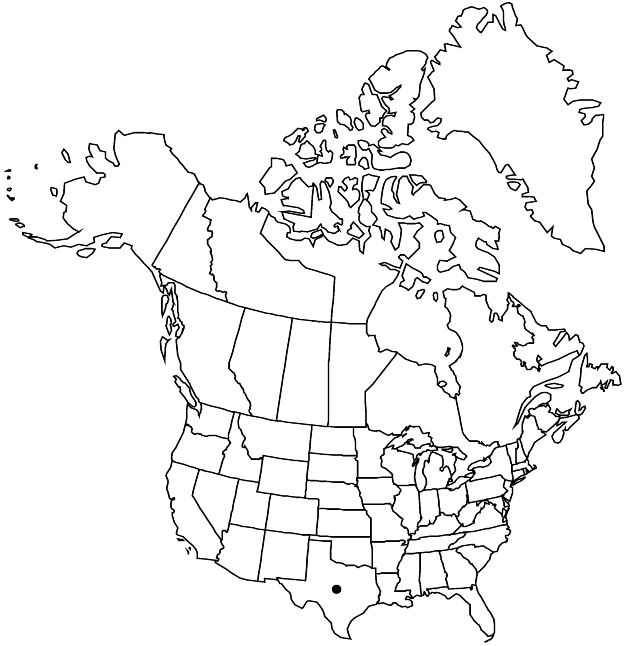Difference between revisions of "Crataegus brazoria"
Bot. Gaz. 31: 233. 1901.
FNA>Volume Importer |
FNA>Volume Importer |
(No difference)
| |
Revision as of 20:39, 24 September 2019
Shrubs or trees, 80–100 dm. Stems: older trunk bark gray and black, scaly; twigs: new growth densely white-hairy, 1-year old shiny brown, older pale gray; thorns on twigs absent or few, ± straight, 2-years old black, slender, 4–7 cm. Leaves: petiole length 35–40% blade, densely pubescent young, becoming sparsely to densely pubescent, eglandular; blade elliptic to narrowly ovate, 4–7 cm, thin, base curved-cuneate, lobes 0, or 1 or 2 apicula per side, margins serrate, teeth 1.5–2.5 mm, veins 4–6 per side, apex acute, abaxial surface woolly pubescent, glabrescent, adaxial scabrous young, variably glabrescent. Inflorescences 7–12-flowered; branches tomentose; bracteoles caducous, linear, subherbaceous, margins glandular, parallel veined, abaxially pubescent. Flowers 15–20 mm diam.; hypanthium tomentose; sepals narrowly triangular, 5–6 mm, margins glandular-laciniate to nearly entire, abaxially densely pubescent; stamens 20, anthers rose; styles 4 or 5. Infructescences: fruiting pedicels pubescent. Pomes usually red, sometimes bright yellow to golden or orange, suborbicular, 8–12 mm diam., often bearing residual hairs, particularly toward base or apex; sepals often broken or absent, broadly spreading; pyrenes 4 or 5.
Phenology: Flowering Mar–Apr; fruiting Sep–Oct.
Habitat: Rich alluvial soil, brush
Elevation: 10–100 m
Discussion
Of conservation concern.
Crataegus brazoria is restricted to south-central and southeastern Texas.
Crataegus brazoria was originally described as yellow-fruited with narrow leaves that more or less lack lobes. Such forms are very rare. The species is here expanded to include more abundant, red-fruited forms that extend into central Texas and are generally similar to C. texana except in leaf shape. It is plausible, because of sympatry and fruit color, that yellow-fruited C. brazoria represents introgression between its red-fruited form and C. mollis var. viburnifolia.
Selected References
None.
